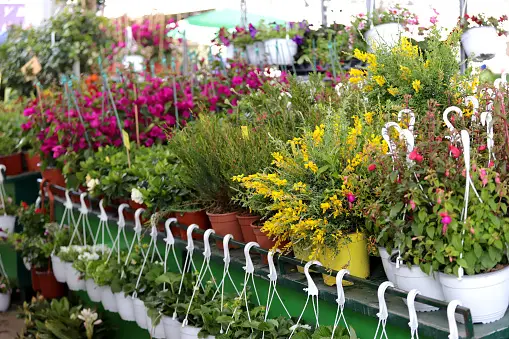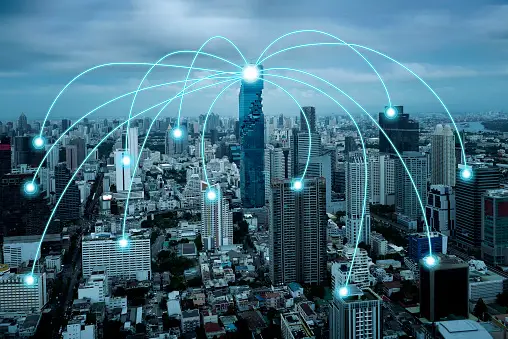Learn you can deal with the problem of low internet speeds and expedite your browsing.
Taming the Slowdown: A Kenyan Guide to Manual Internet Speed Optimization
For many Kenyans, the internet has become an essential utility, as crucial as water and electricity. However, slow internet speeds can be a constant source of frustration, hindering productivity, entertainment, and communication. While waiting for widespread infrastructure improvements, there are several manual steps you can take to optimize your internet connection in Kenya.
This comprehensive guide explores various tactics to squeeze the most out of your existing internet plan, helping you conquer sluggish connections.
Understanding the Kenyan Internet Landscape:
The internet has become an indispensable tool in Kenya, transforming communication, education, business, and access to information. However, despite significant progress, Kenya's internet landscape faces challenges that hinder its full potential. Let's delve deeper into this dynamic landscape, exploring both the existing issues and the promising opportunities that lie ahead.
Challenges and Limitations:
- Limited Infrastructure: Kenya's internet infrastructure is unevenly distributed. While major cities boast fiber optic cable networks offering high speeds, rural areas often rely on slower technologies like DSL or satellite internet. This digital divide leaves a significant portion of the population with limited or no internet access.
- Spectrum Congestion: With a growing number of internet users, the available bandwidth can become congested, leading to slower speeds during peak usage times. This congestion can be particularly frustrating for activities like video streaming, online gaming, and video conferencing.
- Internet Service Provider (ISP) Throttling: Some ISPs might throttle internet speeds during peak hours to manage network traffic. This practice can artificially limit internet speeds, causing frustration for users.
- Outdated Equipment: Many Kenyans utilize outdated routers and modems that may not be able to handle the demands of modern internet usage. Upgrading to newer equipment can significantly improve connection speeds and stability.
- Digital Literacy: Limited digital literacy skills can be a barrier to full internet adoption. Many Kenyans, particularly in rural areas, lack the necessary skills to navigate the online world effectively and safely.
Factors Contributing to the Challenges:
- Infrastructure Costs: Building and maintaining a robust internet infrastructure across the vast Kenyan landscape is expensive. Investment from both public and private sectors is crucial to bridging the digital divide.
- Limited Competition: The Kenyan internet service provider market is somewhat limited, potentially impacting pricing and service quality. Encouraging increased competition could incentivize ISPs to improve infrastructure and service offerings.
- Lack of Awareness: Awareness about the benefits of digital literacy and the availability of training programs is sometimes limited, particularly in rural regions.
Emerging Opportunities and Solutions:
Despite the limitations of Kenya's current internet infrastructure, the future holds immense potential. Here, we explore exciting opportunities and innovative solutions that can illuminate the path towards a more connected and empowered Kenyan digital society.
1. Bridging the Gap: Initiatives for Universal Access
· Government Initiatives: The Kenyan government's National Broadband Strategy, alongside initiatives like the Last Mile Project, aims to bridge the digital divide by extending fiber optic networks to underserved areas. Increased public-private partnerships can expedite infrastructure development, making internet access more affordable and accessible.
· Wireless Mesh Networks: Deploying wireless mesh networks in rural communities offers a cost-effective solution. These networks utilize a network of interconnected nodes to share internet connectivity, expanding coverage without extensive infrastructure investment.
· Fixed Wireless Access (FWA): FWA utilizes radio signals to deliver high-speed internet access over long distances. This technology can be particularly beneficial in rural areas where laying fiber optic cables might be impractical.
2. Mobile Money and E-commerce: Harnessing the Power of Mobile Penetration
Kenya boasts a high mobile phone penetration rate. Leveraging this existing infrastructure provides fertile ground for:
· Mobile Money Integration: Integrating mobile money platforms like M-PESA with online services can simplify online transactions for Kenyans who might not have access to traditional banking systems. This can boost e-commerce participation and financial inclusion.
· Mobile-first Solutions: Developing mobile-first solutions and applications caters to the Kenyan population who primarily access the internet through their smartphones. This will encourage wider online participation and engagement.
3. Satellite Innovation: Reaching Remote Regions
Satellite internet providers are expanding their reach, offering internet connectivity to remote areas with limited terrestrial infrastructure options. While satellite internet generally has higher latency, making it less ideal for real-time applications like online gaming, it can be a valuable tool for:
· Essential Services: Facilitating access to essential services like telemedicine and online education in remote areas, bridging gaps in healthcare and learning opportunities.
· Disaster Relief: Providing internet connectivity during natural disasters or emergencies can be crucial for communication and coordination.
4. Capacity Building: Empowering Through Digital Literacy
Digital literacy skills are crucial for navigating the online world effectively and safely. Here's how Kenya can empower its citizens:
· National Curriculum Integration: Integrating digital literacy education into the national curriculum equips younger generations with the skills they need to thrive in the digital age.
· Community Training Programs: Government and NGO initiatives can offer training programs in rural communities, teaching essential skills like online safety, responsible online behavior, and searching for reliable information.
· Multilingual Resources: Providing digital literacy resources in local languages can ensure inclusivity and cater to a broader range of the Kenyan population.
5. Fostering Innovation and Entrepreneurship:
A thriving digital ecosystem requires an environment that encourages innovation and entrepreneurship:
· Support for Tech Startups: Providing resources, funding opportunities, and business incubation programs can nurture local talent and support the development of innovative solutions to address Kenya's unique internet challenges.
· Focus on Kenyan Solutions: Encouraging the development of Kenyan-led solutions empowers local communities to tackle their specific internet access and usage needs.
The Way Forward: A Multi-Pronged Approach
Bridging the digital divide and unlocking the full potential of the Kenyan internet requires a multi-pronged approach:
- Infrastructure Expansion: Continued investment in building and maintaining a robust, nationwide internet infrastructure is essential. Public-private partnerships can play a crucial role in achieving this goal.
- Promoting Competition: Encouraging a more competitive internet service provider market can incentivize companies to offer better prices, higher speeds, and improved services for Kenyan users.
- Digital Literacy Programs: Investing in digital literacy programs at all levels of education and in rural communities will empower Kenyans to leverage the internet's full potential.
- Consumer Awareness: Raising awareness about internet safety, responsible online behavior, and available resources can help ensure a safer and more positive online experience for all Kenyans.
- Technological Innovation: Exploring and adopting new technologies like wireless mesh networks and fixed wireless access can offer cost-effective solutions for expanding internet access in remote areas.
Optimizing Your Internet Connection:
Here's a comprehensive toolbox of manual solutions to combat slow internet:
1. Choose the Right ISP and Plan:
- Research ISPs: Compare available ISPs in your area, considering factors like advertised speeds, customer reviews, and offered packages. Look for ISPs with transparent pricing and no data caps.
- Understand Your Needs: Analyze your internet usage patterns. Do you need high speeds for streaming videos, gaming, or video conferencing? Choose a plan that aligns with your needs to avoid overpaying.
2. Optimize Your Router and Modem:
- Position Wisely: Place your router in a central location away from walls, metal objects, and other electronic devices that can interfere with the signal.
- Update Firmware: Regularly update your router and modem firmware to ensure optimal performance and security. Check your router's manufacturer website for updates.
- Change Wi-Fi Channel: Wireless routers share bandwidth with other devices on the same channel. Use a Wi-Fi analyzer app to identify less congested channels and adjust your router settings accordingly.
- Consider a Wired Connection: Whenever possible, connect devices directly to your router with an Ethernet cable. Wired connections offer a more stable and faster connection compared to Wi-Fi.
3. Manage Your Network Traffic:
- Identify Bandwidth Hogs: Use online tools or your router's settings to identify devices consuming the most bandwidth. Limit background applications like automatic updates or streaming services when not actively in use.
- Prioritize Important Devices: Prioritize bandwidth allocation for devices that require a stable connection, like video conferencing or online gaming. Some routers offer Quality of Service (QoS) settings to prioritize specific devices.
- Control Background Downloads: Schedule large downloads (software updates, movies) for off-peak hours to avoid impacting overall internet speed during peak usage times.
4. Consider Alternative Technologies:
- Mobile Data: If your fixed internet connection is consistently slow, consider using your mobile data hotspot as a temporary solution. However, be mindful of data caps associated with your mobile plan.
- Satellite Internet: In remote areas with limited access to traditional internet options, satellite internet might be a possibility. However, satellite internet generally has higher latency (delay in data transfer), making it less ideal for real-time applications like online gaming or video calls.
5. Communicate with Your ISP:
- Contact Your ISP: If you've exhausted all manual optimizations and still experience slow speeds, contact your ISP. Explain the issue and inquire about potential causes or possible upgrades to your plan.
- Request a Speed Test: Most ISPs offer online speed tests. Run a speed test at different times of the day to compare results.
Additional Considerations:
- Virus and Malware Scans: Regularly scan your devices for viruses or malware. These can sometimes consume bandwidth and slow down your internet connection.
- Invest in a Better Router: If your current router is old, consider upgrading to a newer model with features like beam forming and MU-MIMO technology for improved performance.
Conclusion
Bridging the digital divide in Kenya will require a collaborative effort from the government, private sector, NGOs, and the Kenyan people themselves. By embracing innovative solutions, investing in infrastructure, and prioritizing digital literacy, Kenya can unlock the full potential of the internet and empower its citizens to take an active role in the global digital landscape. With a focus on inclusivity, affordability, and local innovation, Kenya can build a brighter digital future that illuminates the path towards a more connected and knowledge-based society.


























